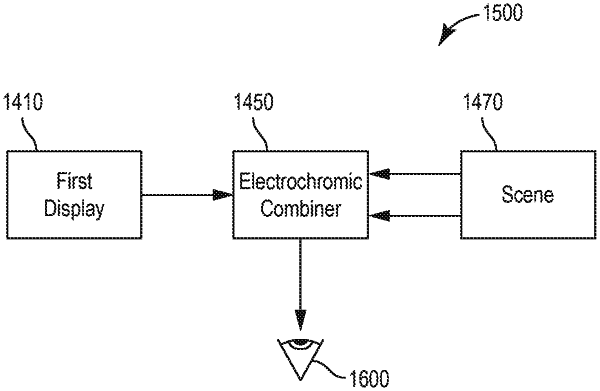| CPC G02F 1/163 (2013.01) [G02F 1/13318 (2013.01); G02F 1/133602 (2013.01)] | 20 Claims |

|
1. An optical display system, comprising:
a first display, configured to operate at low brightness levels by reducing a minimum brightness of the first display;
a combiner arranged to combine at least one image from a scene and an image from the first display to provide a combined image, the combiner including an electrochromic layer including one or more electrochromic regions separated from each other, wherein the combiner is separated from the first display and comprises:
a high light transmissive side oriented to the scene;
a high reflectivity side oriented to the first display, wherein a coating for the electrochromic layer having an index of refraction different than the index of refraction of the electrochromic layer causes the high reflectivity;
and
an index matching material;
one or more electronic drivers arranged to electrically connect with and drive respective of the one or more electrochromic regions;
and
a controller configured to control the one or more electronic drivers to individually address each of the one or more electrochromic regions to selectively drive by applying a potential difference to some of the one or more electrochromic regions to change light transmission of the selectively driven one or more electrochromic regions;
wherein the light transmission of the selectively driven one or more electrochromic regions decreases when the potential difference increases;
and
wherein the controller is configured to allow the light transmission in each of the one or more electrochromic regions to be non-uniform.
|